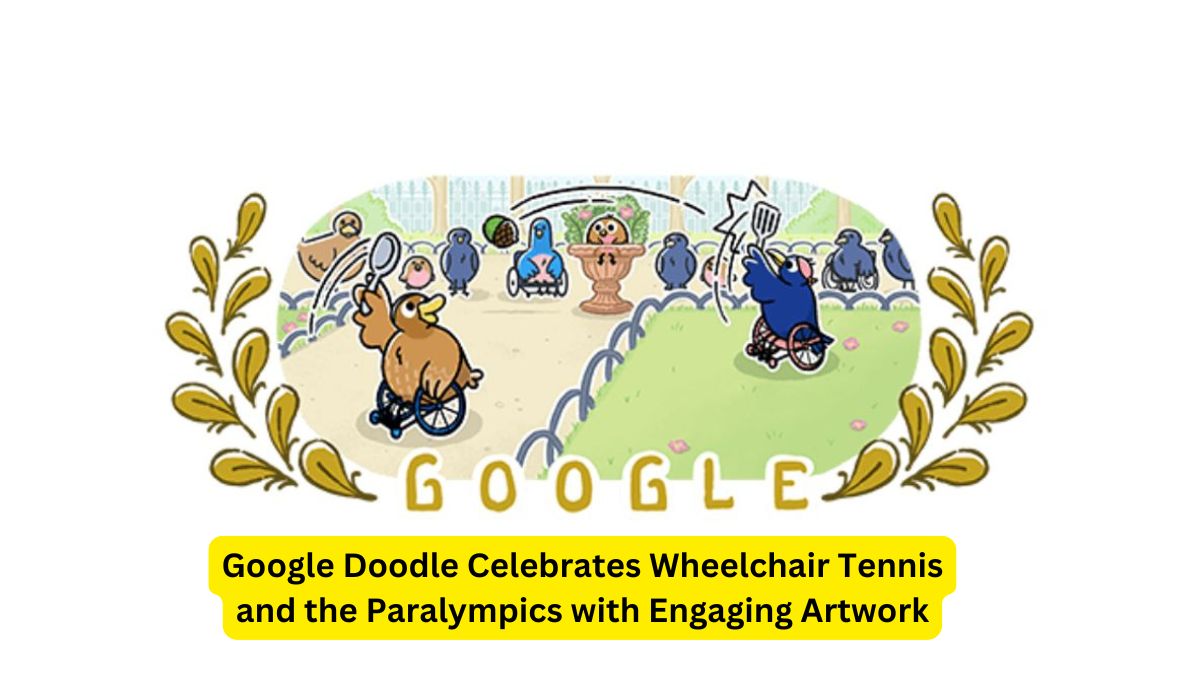
Google Doodle Celebrates Wheelchair Tennis and the Paralympics with Engaging Artwork
Google has once again used its iconic Doodle to highlight an important global event, this time celebrating wheelchair tennis and the Paralympics. The Doodle, which graced the search engine’s homepage, was not only a tribute to the athletes who compete in these events but also an acknowledgment of the broader Paralympic movement that promotes inclusivity and the spirit of competition for athletes with disabilities.Google Doodle Celebrates Wheelchair Tennis and the Paralympics with Engaging Artwork
The Significance of the Google Doodle
Google Doodles have become a powerful platform for raising awareness about significant events, anniversaries, and important figures in history. By dedicating a Doodle to wheelchair tennis and the Paralympics, Google is shining a spotlight on a sport that exemplifies resilience, determination, and the breaking of physical and social barriers. This Doodle serves as a reminder of the achievements of Paralympic athletes and the progress that has been made in making sports accessible to all.
Wheelchair Tennis Sport of Skill and Endurance
Wheelchair tennis is one of the most popular sports in the Paralympic Games, known for its high level of skill, strategy, and physical endurance. The sport follows almost the same rules as able-bodied tennis, with a few key differences to accommodate the use of wheelchairs. Players must maneuver their wheelchairs with precision while simultaneously executing powerful serves, volleys, and returns. The athleticism required in wheelchair tennis is a testament to the capabilities of the athletes and their dedication to their sport.
The Evolution of Wheelchair Tennis
Wheelchair tennis has come a long way since its inception in the 1970s. It was first introduced as a recreational activity for individuals with spinal cord injuries but quickly grew into a competitive sport. The International Tennis Federation (ITF) recognized wheelchair tennis in 1988, and it made its Paralympic debut at the 1992 Barcelona Games. Since then, the sport has gained international popularity, with tournaments held around the world and a growing number of athletes participating at both amateur and professional levels.
Paralympics Celebration of Human Spirit
The Paralympics is more than just a sporting event; it is a celebration of human spirit and determination. The Games provide a platform for athletes with disabilities to compete at the highest level and demonstrate their incredible abilities. The Paralympics have played a crucial role in changing perceptions about disability, challenging stereotypes, and promoting greater inclusivity in sports and society as a whole.
Google’s Commitment to Inclusivity
Google’s choice to feature wheelchair tennis in their Doodle reflects the company’s ongoing commitment to inclusivity and representation. By highlighting Paralympic sports, Google is helping to bring these athletes’ stories to a global audience, encouraging more people to learn about and support Paralympic sports. This Doodle is a part of Google’s broader efforts to promote diversity and inclusion, both within its organization and in the world at large.
The Artistic Elements of the Doodle
The Doodle itself is a vibrant and dynamic piece of art that captures the energy and excitement of wheelchair tennis. The illustration features an athlete in motion, skillfully maneuvering their wheelchair and striking the ball with precision. The use of bright colors and bold lines conveys the intensity of the sport, while the athlete’s determined expression highlights the focus and dedication required to compete at the Paralympic level.
The Impact of the Paralympic Movement
The Paralympic movement has had a profound impact on society, changing the way people view disability and paving the way for greater accessibility and inclusivity in sports. The success of Paralympic athletes has inspired countless individuals with disabilities to pursue their dreams and has led to increased opportunities for participation in sports at all levels. The Paralympics have also influenced public policy and contributed to the development of adaptive technologies that improve the lives of people with disabilities.
Prominent Paralympic Athletes in Wheelchair Tennis
Over the years, several Paralympic athletes have made a significant impact on the sport of wheelchair tennis. Athletes like Esther Vergeer, who dominated women’s wheelchair tennis for over a decade, and Shingo Kunieda, a multiple-time Paralympic gold medalist, have become icons in the sport. Their achievements have not only raised the profile of wheelchair tennis but have also inspired a new generation of athletes to take up the sport and compete at the highest levels.
The Future of Wheelchair Tennis and the Paralympics
The future of wheelchair tennis and the Paralympics looks bright, with increasing participation, media coverage, and public interest. As more people become aware of the skill and dedication required to excel in these sports, the Paralympic movement will continue to grow, fostering greater inclusivity in the world of sports. Innovations in adaptive technology and equipment will also enhance the performance of athletes, enabling them to push the boundaries of what is possible.
Conclusion
Google’s Doodle celebrating wheelchair tennis and the Paralympics is a powerful tribute to the athletes who inspire us all with their determination, resilience, and sportsmanship. By bringing attention to this important event, Google not only honors the achievements of Paralympic athletes but also reinforces the message of inclusivity and the importance of providing equal opportunities for all athletes, regardless of physical ability. As the Paralympic movement continues to gain momentum, it will undoubtedly leave a lasting legacy of empowerment, breaking down barriers, and redefining what it means to be an athlete.



